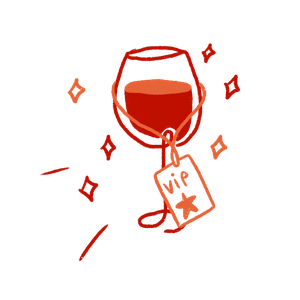Chardonnay or Sauvignon Blanc : Which to Choose?
Chardonnay or Sauvignon: Make the Right Choice for Your Next Glass of White Wine
When it comes to white wines, two names often come to the forefront: Chardonnay and Sauvignon Blanc. These two popular grape varieties offer distinct wine styles, each with its own character and aromas. But how do you choose between a Chardonnay and a Sauvignon Blanc?
What Are the Differences Between Chardonnay and Sauvignon Blanc?
Wine Style
Sauvignon Blanc is the quintessential varietal wine. It primarily expresses the characteristics of the grape itself. It often produces fruity wines with aromas of citrus, green apple, and boxwood, sometimes accompanied by mineral and herbaceous notes. This grape, originally from the Loire Valley in France, is also very popular in New Zealand and California, where it offers unique aromatic profiles:
-
New Zealand Sauvignon: The "Savvy B," particularly from Marlborough, is explosive with tropical fruit aromas like passionfruit and guava, enhanced by herbal notes and a lively acidity. It’s a true bouquet of freshness.
-
California Sauvignon: In California, Sauvignon Blancs are often rounder and less acidic. You’ll find aromas of melon, peach, and lemon, sometimes with a touch of oak adding notes of vanilla and sweet spices. These wines are richer and can even remind you of certain Chardonnays due to their texture.
On the other hand, Chardonnay is the champion of terroir expression. The taste of the wine can change significantly depending on the region where it is grown. In Burgundy, Chardonnays are often rich and complex, with stone fruit, butter, and nutty aromas. In warmer climates like California, expect more opulent and tropical wines, with notes of vanilla and oak from barrel aging.
For Whom and for What Occasions?
-
Chardonnay: Chardonnay is ideal for those who enjoy complex and varied wines. It’s a terroir-driven wine, perfect for capturing the essence of the soils and climates of Burgundy. If you love wines with multiple layers of flavors, Chardonnay is for you. It’s perfect for sophisticated menus, gourmet evenings, or impressing friends at dinner.
-
Sauvignon Blanc: The Sauvignon grape is perfect for lovers of vibrant and refreshing wines. If you’re looking for a dry white wine with distinct aromas of fruit and greenery, Sauvignon Blanc is an excellent choice. It’s ideal for appetizers, picnics, and light meals. Its freshness and natural acidity make it a perfect companion for relaxed moments with friends or family.
Best Food Pairings
-
With Chardonnay: Pairings with Chardonnay vary depending on the wine style. Burgundy Chardonnays are excellent with rich dishes like lobster, scallops, and creamy chicken. A more opulent California Chardonnay is perfect with grilled dishes and spicy foods like Thai curries.
-
With Sauvignon Blanc: Sauvignon Blanc is incredibly versatile for food pairings. Its freshness and acidity pair wonderfully with seafood, oysters, salads, and goat cheese dishes. A Loire Sauvignon is also ideal with goat cheeses, while a New Zealand Sauvignon enhances spicy dishes or sushi.
Conclusion
So, Chardonnay or Sauvignon? It ultimately comes down to taste and occasion. If you enjoy complex and elegant wines, opt for a Chardonnay. If you prefer fresh and fruity wines, Sauvignon Blanc is your best ally. Whichever you choose, both popular grape varieties offer unique tasting experiences that can elevate a multitude of dishes and occasions. The choice is yours!






